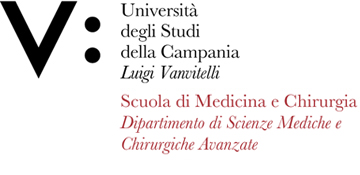Mariadelina SIMEONI
Insegnamento di NEPHROLOGY
Corso di laurea magistrale a ciclo unico in MEDICINA E CHIRURGIA
SSD: MED/14
CFU: 4,00
ORE PER UNITÀ DIDATTICA: 40,00
Periodo di Erogazione: Primo Semestre
Italiano
| Lingua di insegnamento | Inglese |
| Contenuti | Conoscenza dei principali segni e sintomi delle patologie di interesse nefrologico. Conoscenza dei principi basilari di diagnosi e terapia delle malattie renali, della terapia dialitica e del trapianto renale. |
| Testi di riferimento | Materiale fornito dal docente (slides e schemi riassuntivi). Gli studenti che vorranno approfondire alcuni argomenti potranno utilizzare il testo: VVander’s Renal Physiology, Douglas and Pooler, 2018 |
| Obiettivi formativi | Il corso di propone i seguenti obiettivi formativi. |
| Prerequisiti | Conoscenza delle principali nozioni di anatomia e fisiologia renale. |
| Metodologie didattiche | Lezioni frontali con frequenza obbligatoria valutata mediante badge. |
| Metodi di valutazione | L'esame di verifica di apprendimento verrà effettuato mediante un colloquio orale. L'esame avrà lo scopo di verificare le conoscenze dello studente dei principali aspetti fisiologici e fisiopatologici renali. Lo studente dovrà dimostrare di saper riconoscere i principali segni e sintomi di disfunzione renale e di conoscere i principali strumenti di screening di funzione renale. Inoltre, dovrà dimostrare una conoscenza approfondita dei meccanismi fisiopatologici delle principali patologie di interesse nefrologico, degli squilibri elettrolitici ed acido-base, e di conoscere i principi di terapia medica, dialisi e trapianto. |
| Altre informazioni | I docenti forniranno il materiale didattico ( slides, fotocopie etc) |
| Programma del corso | DEFINIZIONE DEI SINTOMI E SEGNI E DEI MECCANISMI FISIOPATOLOGICI CHE LI DETERMINANO: Oliguria, Poliuria, Disuria, Pollachiuria, Edema, Anasarca, Tenesmo, Urgenza, Disidratazione. |
English
| Teaching language | English |
| Contents | Knowledge of main signs and symptoms of renal diseases. Understanding critical aspects of diagnosis and treatment of renal diseases and renal replacement therapy (dialysis and kidney transplant). |
| Textbook and course materials | Material provided by the professors (slides and flowcharts). Students can eventually examine in depth specific arguments by using the textbook: Vander’s Renal Physiology, Douglas and Pooler, 2018 |
| Course objectives | At the end of the course, the student must know the correct terminology of signs and symptoms of renal diseases, the main testings to screen renal function and the physiopathology and treatment of the most common renal diseases. The student will be able to integrate the main topics of both Urology and Nephrology Courses, in order to draw conclusions. Another aim is to develop communication skills required to relate himself with patient and to other specialties. To show capabilities in establishing and keeping effective relationship with patient and his/her family. At the end of course, the student should be aware of the role of the nephrologist in ward and outpatient clinics. |
| Prerequisites | Understanding the main aspects of renal anatomy and physiology. |
| Teaching methods | Formal lessons with compulsory attendance evaluated by means of badge |
| Evaluation methods | Evaluation of student proficiency is based on oral test (viva voce). The oral exam covers the main aspects of renal physiology and diseases. The students should be able to recognize the different signs and symptoms suggesting renal dysfunction, and to know the main investigations to assess renal function. |
| Other information | Students will receive slides and photocopies of special issues for a deeper analysis of several aspects under study, during the course. |
| Course Syllabus | DEFINITION OF SIGNS AND SYMPTOMS AND THEIR PATHOPHYSIOLOGY: |








